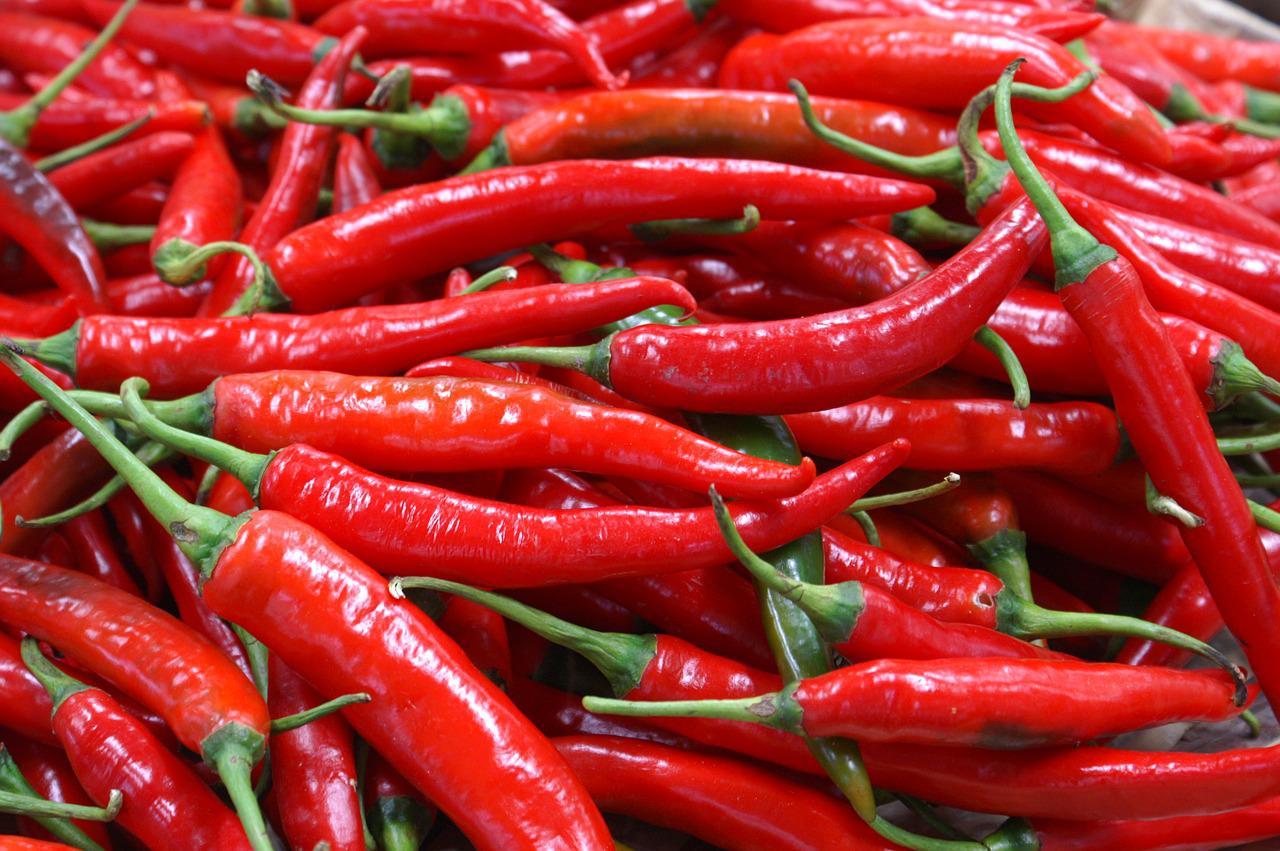In Costa Rica, the chile pepper is very popular with the locals, particularly as an ornamental plant that doubles as a spicy condiment for meals. Chiles are truly native plants of the neotropics that form an important part of the culture and cuisine.
Cayenne pepper (chile picante) is a hot red pepper used to flavor dishes; its name comes from the city of Cayenne in French Guiana. Its powdered form comes from the fruit of several cultivated varieties of Capsicum frutescens. Sweet peppers (chile dulce) originate from Capsicum annum. All are related species of the nightshade family, Solanaceae.
Chile seeds can be collected and dried from the fruits of your favorite varieties togerminate like any other seeds. The seeds should be spaced about 5 centimeters apart in flats with prepared potting soil. Cover the seeds with about 0.5 cm of the same soil and water the tray lightly. Check them every day and spray with a little water if they look a bit dry.
Germination time varies greatly among varieties, but plants usually germinate in one to three weeks. Once your seedlings have poked their heads out of the soil, they will have a new requirement – sunlight. Be sure your flat is in an area that receives morning sunlight; this will prevent the young plants from growing tall and spindly.
Once the seedlings have developed their second set of leaves, it is time to re-pot them. I usually opt for recycled plastic cups with holes in the bottom. Be careful not to damage the seedlings during this process.
Keep the newly transplanted chiles in a shaded area for several days until they recuperate from the transplant, and then move them into the sunlight. After two or three weeks, the plants can be transplanted to the garden or a container, such as a five-gallon plastic bucket with holes in the bottom. Use rich, fertile soil fortified with compost.
A frequently asked question is: “How often do you feed chiles, and with what?” In the early stages, water every two or three days, or whenever the soil looks dry on top. In verano (the dry season), when the temperatures increase, water once a day. Once the flowers start to set, you can add soluble fertilizers such as compost tea or commercial brands to the water once a week.
If your plants are kept outside, pollination is taken care of naturally by bees. If you are growing your plants inside, you may want to consider pollinating them yourself. All you need to do is wait until you have a few flowers on your plants; then, lightly rub your little finger inside the flower heads on your plants. This will do the bee’s job of moving pollen around from flower to flower.
Eventually you will see that some of the flowers will go brown and drop off. There’s no need for alarm – a chile is pushing its way through the flower. All you need to do now is keep up the watering and wait for your fruits to ripen. Picking the ripe fruits stimulates the plant to produce more flowers and fruits.
Costa Ricans don’t use hot chile peppers in their traditional foods as often as Mexicans, but it is common for Tica housewives to make chilera, which can often be found on the family table or in sodas and restaurants.
This is a hot condiment made from vinegar, hot chiles, diced onions and garlic, plus any other garden vegetables at hand, such as carrots and cauliflower. The ingredients are placed in a clean glass jar with vinegar and topped off with a good lid. I might add that it’s best to use natural vinegar rather than the synthetic type, which can be detrimental to your health.
If you have a surplus of chile peppers, you can dry them and grind them in a blender to make a fine powder for seasoning your favorite dishes. This same powder can be used to fill empty gelatin capsules for medicinal use (three to six capsules a day). Chile peppers were first used in food preparation to prevent the growth of dangerous microbes that could flourish without refrigeration.
Cayenne contains a resin-like, pungent substance known as capsaicin, which is an antibacterial agent used to treat many digestive disorders stemming from unwanted bacteria in the digestive tract. Capsaicin also improves circulation and strengthens the heart. Ornamental, spice and medicine all in one, chile peppers make a great addition to the home garden.






